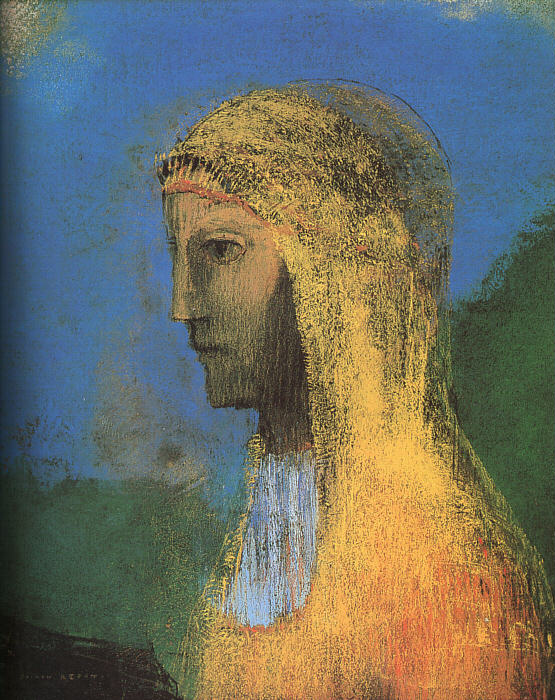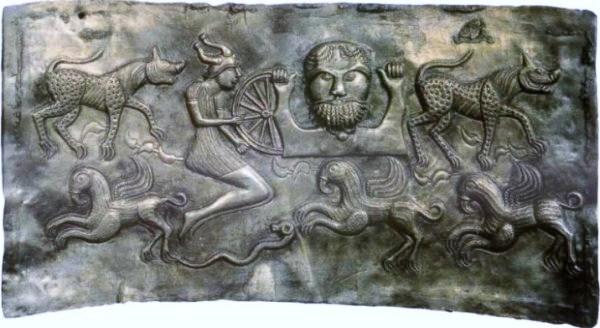
LIFE AS MYTH
![]()
JOURNAL
![]()
JOURNAL 2007
![]()
Following a white hart
Exploring myth & meaning
![]()
AUTUMN 2007
Following a white hart
Index 2007A fool, a cup, and a wounded fisher king
St. Brendan and the mermaid at Clonfert
![]()
LIFEWORKS
![]()
ATLAS
![]()

AUTUMN 2007
THE GUNDESTRUP CAULDRON

Panel from the Gundestrup cauldron. 100-200 B.C.E. National Museum of Denmark. Copenhagen.
The Druidess. Odilon Redon. 1893. The Ian Woodner Family Collection, New York. In Celtic tradition, the Druidess is a priestess who has the gift of divination.
Found in a peat bog in Himmerland, Denmark in 1891, the Gundestrup cauldron is the largest known example of European Iron Age silver work. In Celtic mythology, the cauldron is a symbol of abundance and prosperity. Sacred to the goddess Cerridwen, it is also a symbol of the womb and the feminine principle. According to mythic tradition, cauldrons have magical properties which facilitate their use for divination and enchantment.
Though decidedly Eastern European in workmanship, the Gundestrup cauldron depicts Celtic deities and rituals. Historians identify the central bearded character in the panel above as Dagda, the god of abundance. Dagda, which means All Father, possesses three magic objects. The living harp with which he controls the seasons and the weather, a two-headed club which can both create and destroy, and the cauldron of endless abundance.
One ancient myth describes a ritual which involves the immersing of dead warriors in a cauldron. The Druids believed that these warriors would return to life, though unable to speak and without a soul. After their resurrection, they could return to battle and fight to the death again. An interior panel on the Gundestrup cauldron depicts this immersing ritual.

